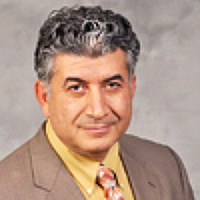Mitigation and adaptation to climate change of plant pathogens
Published on: 7th September, 2022
The impact of climate change on plant diseases poses a serious threat to food security [1-4]. Climate change has a direct effect on the occurrence and severity of disease in crops. Global plant health assessment and crop loss estimation due to pests and diseases has been made especially for cropping regions defined by the major crops of wheat, rice, maize, potato and soybean [5].
Rapid determination of PCDDs, PCDFs and DL-PCBs in foods, feeding stuffs and vegetable oils using new modified acid silica
Published on: 5th January, 2023
Polychlorinated dibenzo-p-dioxins, dibenzofurans and dioxin-like polychlorinated biphenyls are persistent organic pollutants (POPs), which in recent years received huge attention due to their extreme stability, high potential toxicity and bioaccumulation in food chains. The main source of human exposure to these compounds is discovered in foods of animal origin, especially foods rich in fat. The target of the present study was to set up an analytical method for the determination of PCDDs/PCDFs and DL-PCB in vegetable oils, sunflower meals, sunflower seeds, rapeseeds and milk powder. The first step consisted of a semi-automatic Soxhlet extraction for 3 hours, by using a mixture of Hexane: Acetone – 80:20, followed by acid digestion with 55% acid silica and filtration. After concentration, the extract is purified on a multilayer column (silica gel, silica-KOH, silica-H2SO4 anhydrous Na2SO4) followed by an alumina column separation in two fractions (first fraction containing PCDDs/PCDFs and second containing only PCBs). The purified extract was then analyzed by GC/MS/MS. The newly developed approach in our lab was capable to reduce the overall time of sample preparation to seven hours/ per sample. Since the method shows good mean recoveries for all labeled congeners spiked in the samples (for PCDDs/PCDFs – 80% - 110%, for DL-PCBs – 70% - 85%), we assumed the absence of overestimation or underestimation in the analyzed samples.
Studies of dose distribution to Lung and Stomach and Estimation of Second Cancer Risk due to Outfield Dose in Radiotherapy with 60Co Teletherapy Beam
Published on: 8th August, 2023
A critical component of the radiation regimen for treating cancer patients is the precise dose delivery to the treatment organ while minimizing the dose to the healthy tissue. This study aims to evaluate in-field organ dose and dose distribution outside the target organs to estimate the excess lifetime risk of second cancer. The study was carried out with a male Alderson Rando Phantom. 20 sets of thermoluminescence dosimeters (MTS-100) were used in this study. The in-field organs absorbed dose was measured by inserting TLDs at different geometrical depths of the left lung, right lung, and stomach, and for peripheral organs skin dose TLDs were placed at the surface of the corresponding organs. Target organs were irradiated at 100 cGy and 200 cGy by a 60Co teletherapy unit, and irradiated TLDs were read out by a RE-2000 TLD reader. For precise dose delivery to the cancerous organs by 60Co teletherapy, the depth dose correction factor for lung cancer treatment is 0.8667 ± 0.01, and for the stomach is 0.7856 ± 0.017. In the case of the treatment for the lung and stomach, the closest organs received significant doses compared to the other distant organs. Thus, the risk of second cancer due to the peripheral dose is obtained. The stomach is at the highest risk when the lung is the target and the liver is at the highest risk when the stomach is the targeted organ.
Mechanism of Action and Validation of the Traditional Medicinal use of Grewia Tenax Fruits in Sudan to Encounter Iron Deficiency Anemia
Published on: 27th December, 2023
Introduction: In Sudan, Grewia tenax fruits, are known commonly as Goddaim. The fruit’s pericarp is used traditionally for a long time as a juice or a porridge to treat iron deficiency anemia (IDA). Traditional Goddaim users have a very strong belief in its effectiveness. However, the pattern of hemoglobin improvement follows an initial fast increase followed by a decline upon continuing its use. Some previous studies have attributed its effect to high iron content, while the iron quantity was too small. This work attempts to find an explanation for its mechanism of action by screening the fruit extract and its respective fractions for secondary metabolites, minerals, vitamins, and fibre. Methods: Entailed three methodologies: Chemical analysis to identify quantified minerals, ascorbic acid and non-digestible fibers, Phytochemical Analysis to separate and identify secondary metabolites using high-performance liquid chromatography coupled to tandem mass spectrometry (HPLC-MS-MS technique), and estimation of radical scavenging activities of crude fruit extract and its respective chloroform and ethyl acetate fractions by inhibition of the 2,2-diphenylpicrylhydrazyl (DPPH).Results: Ascorbic acid and indigestible fibres were revealed in the aqueous extract. Secondary metabolites were flavonoids (e.g., quercetin, kaempferol), organic acids (e.g., ferulic acid, chlorogenic acid), β-carboline alkaloids (e.g., 3-hydroxy-tetrahydroharman) identified in the chloroform, and ethyl acetate fractions. The in vitro antioxidant activity of G. tenax fruit extract was confirmed spectrophotometrically. Conclusion: It can be concluded that the initial enhancement of iron absorption through ascorbic acid and fibres, followed by iron uptake inhibition, could be explained by iron chelation by the chelators in the fruits. This paradoxical effect may qualify G. tenax fruits as a safety gauge for improving haemoglobin levels without compromising iron excess once iron stores are filled by keeping the oxidative stress in check. This may present G. tenax fruits as a good and safe remedy that optimizes the treatment of IDA.
Statistical Mathematical Analysis of COVID-19 at World Level
Published on: 5th April, 2024
Worldwide, statistical data of people infected by COVID-19 has been taken until March 29, 2023, which, when correlated, showed a predictive logistic model. The purpose was to determine the predictive model, which was acceptable, in such a way that the proportionality constant and the correlation and determination coefficients are of great importance to estimating epidemiological and pandemic data; coinciding with what was reported by other authors. Bearing in mind that a mathematical model is a mathematical description through a function or equation of a phenomenon in the real world; whose purpose is to understand infections and make predictions for the future. The stages were: to model the number of people infected as a function of time, formulate, and choose the logistic model, determine the model and obtain mathematical conclusions, and make predictions (estimates) about the number of people infected by COVID-19 worldwide. The logistic model was derived to predict the speed of people infected by COVID-19 and the critical time (tc = 733 days) for which the speed was maximum (1694,7209 infected/day). The Pearson correlation coefficient for the time elapsed (t) and the number of people infected (N) worldwide, based on 32 cases, was r = -0.88; the relationship between time and those infected is real, there is a “very strong correlation” between the time elapsed (t) and the number of people infected (N) and 77.03% of the variance in N is explained by t.
Cardioprotective Potentials of Anacardium occidentale Nuts Methanolic Extract in Diabetes-Induced Cardiac Dysfunction in Rats
Published on: 15th May, 2024
Background: The unwanted adverse toxicity displayed by synthetic antidiabetic medicine leads to the search for effective natural medicine to combat diabetes complications. This study investigated the cardioprotective of Anacardium occidentale nuts methanolic in high-fat diet (HFD)/streptozotocin (STZ)-induced diabetic rats.Materials and methods: Forty male adult Wistar were used and fed with HFD for 6 weeks before diabetes induction. The rats were grouped into 5 groups, 8 rats/group. Group I: normal control; Group II: diabetic control; Group III & IV: diabetic rats + 100 mg/kgb.wt & 200 mg/kgb.wt Anacardium occidentale nuts methanolic extract; Group V: diabetic rats + 200 mg/kgb.wt metformin. The rats were sacrificed on the experiment’s last day, blood samples were collected and the hearts were isolated for biochemical parameters estimation.Results: Food intake, water intake, plasmas insulin, Fasting Blood Glucose (FBG), glycosylated hemoglobin (HbA1c), cardiac enzymes, lipid profile, inflammatory cytokines, malondialdehyde, fibrotic marker, caspase-3 in cardiac of diabetic rats were elevated (p < 0.05) significantly. Body weight, cardiac antioxidant, and anti-apoptotic marker levels diminished (p < 0.05) significantly in diabetic rats. 100 mg/kgb.wt & 200 mg/kgb.wt of Anacardium occidentale nuts methanolic extract administration significantly suppressed the plasma insulin, FBG, HbA1c, cardiac lipid profile, cardiac enzymes biomarker, cardiac inflammatory cytokines, cardiac malondialdehyde, cardiac fibrotic marker, cardiac caspase-3, food intake & water intake and increased the body weight, cardiac antioxidant & cardiac anti-apoptotic marker in the diabetic rats.Conclusion: Anacardium occidentale nuts attenuate cardiac injury in diabetes. It could be a natural medicine to manage diabetes-cardiovascular complications.
The Use of Computed Tomography to Quantify Renal Calculi Strain to Estimate Potential Symptomatic Incidents
Published on: 21st May, 2024
This study investigates into the historical evolution and contemporary applications of Computed Tomography (CT) in renal stone estimation, with a focus on the innovative use of CT to quantify renallcalculiistrain for estimating potentiallsymptomatic incidents.Historically, CT has played a pivotal role in diagnosing renal calculi, offering unparalleled sensitivity and specificity in detecting stones of varying composition and size. However, the clinical significance of renal calculi extends beyond mere detection, prompting researchers to explore novel approaches to predict symptomatic events associated with stone disease. This research aimed to determine the right way to classify asymptomatic radiographic calculi strain on computed tomography (CT) scans in Al-Hussein Teaching Hospital, Al-Muthanna, Iraq. A survey was made available to calculi formers who had a CT scan during asymptomatic after a calculi clinical assessment. A survey and a study of medical records revealed symptomatic calculi route incidents after a CT scan. The amount of calculus, the biggest calculi thickness, electronic total calculi size (TSV), and two-pronged calculus were measured radiographically and linked as predictors of calculi events. There were 55 calculi formers in the study, and 61% had a calculi event one year after the CT scan. The calculus number was (0–1, 2–3, 4–6, 7), the highest calculi diameter was (0–2, 3–4, 5–7, 8 mm), and 48% had bilateral calculus. The number of calculus per quartile had a danger ratio of 1.30 (p = 0.001), the largest calculi diameter had a hazard ratio of 1.26 (p 0.001), TSV had a hazard ratio of 1.38 (p = 0.001), and bilateral calculus had a hazard ratio of 1.80 (p = 0.001). Only TSV wass an unbiased measure offsymptomaticceventssin multivariable regression (HR = 1.35 per quartile, p = 0.01). TSV-related incidents were also unaffected by demographics, urinary chemistry, or calculi composition. A drastic rise in TSV between CT scans (> 31 mm3/year) expected additional eventssin the 49 patients with interim events (HR = 2.8, p = 0.05). For calculating calculi pressure on CT scan, automated TSV is more accurate for asymptomatic events than physical approaches.
Dental Age Estimation using the Cameriere Method in Different Countries: A Review
Published on: 10th September, 2024
Age estimation is an essential aspect of profile building in forensic investigations. Age estimation using teeth is one of the exciting applications of Forensic Odontology because teeth can survive post-mortem damage, so it is considered more suitable for age estimation. This study aims to estimate the age of individuals using the Cameriere method on teeth in various countries. The approach used in this research is a literature review study design compiled based on the Preferred Reporting System for Systematic Reviews and Meta-Analyses (PRISMA) guidelines from several articles with a period from 2007-2024. Scientific articles that meet the criteria will be analyzed using the Cameriere method to estimate the age of individuals. The search yielded 222 studies and only 12 scientific articles that met the requirements from the specified articles obtained. The population represents countries from various countries. The sample was in the age range of 4 years - 16 years. The results showed that the Cameriere method can be used to estimate the age of individuals quite accurately in various countries. However, there were some differences in accuracy between countries when using this method.
Advancing Forensic Approaches to Human Trafficking: The Role of Dental Identification
Published on: 4th April, 2025
Background: Human trafficking is a significant global issue that affects millions of individuals, where victim identification remains a major challenge. Traditional methods such as DNA or fingerprint analysis are not always viable, necessitating alternative forensic approaches.Methods: This article reviews the role of dental identification in human trafficking cases through an extensive analysis of existing literature. The study incorporates forensic odontology techniques, including dental charting, radiographic analysis, bite mark analysis, age estimation, and emerging technologies like Artificial Intelligence (AI).Results: Findings indicate that dental identification methods are essential for victim identification, especially when conventional methods prove ineffective. AI integration enhances the accuracy and efficiency of dental forensic investigations, addressing challenges such as record access and cross-border complexities.Conclusion: Dental identification, augmented by AI advancements, is an indispensable tool in forensic investigations related to human trafficking. The study underscores the necessity of international collaboration and technological innovation to enhance forensic practices.
















